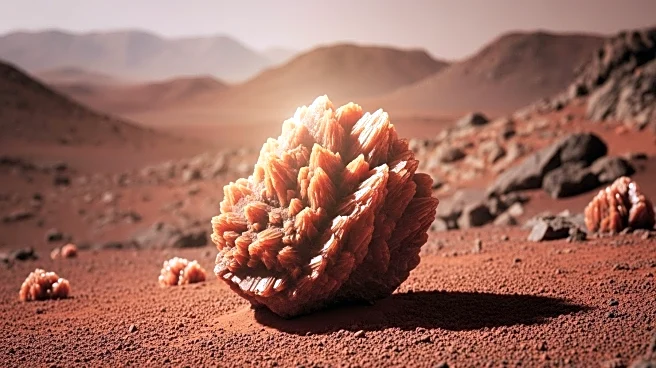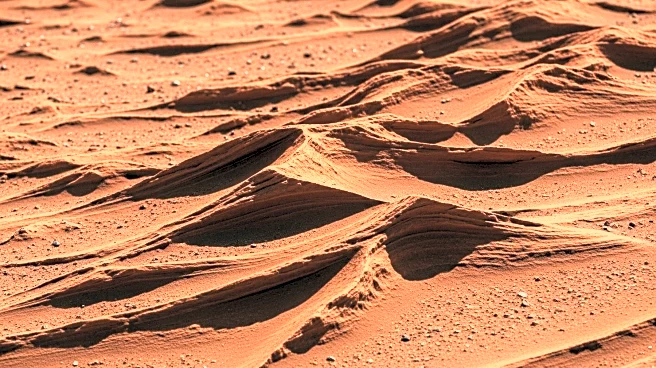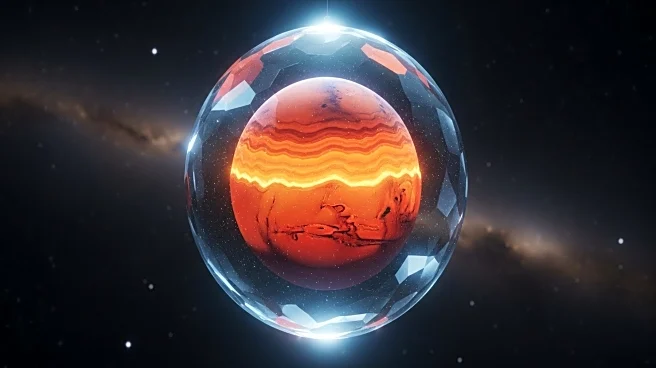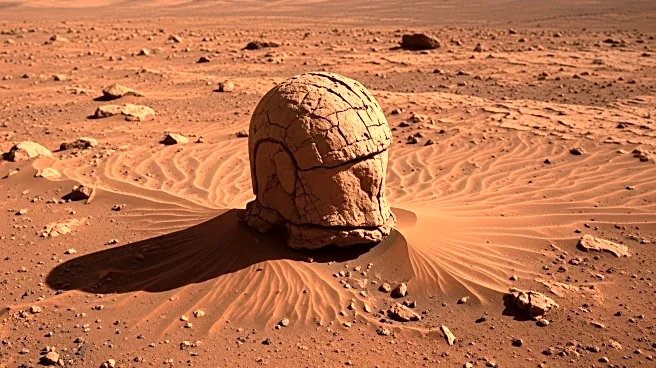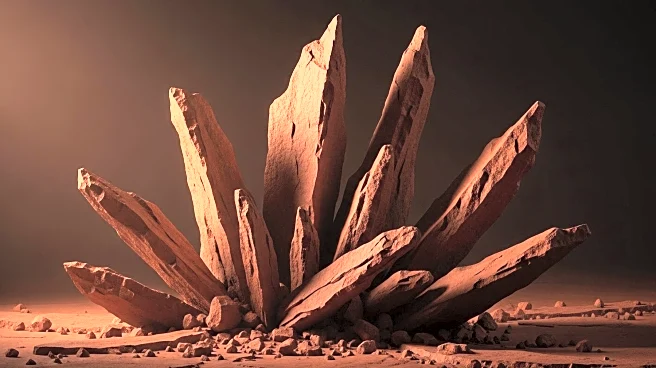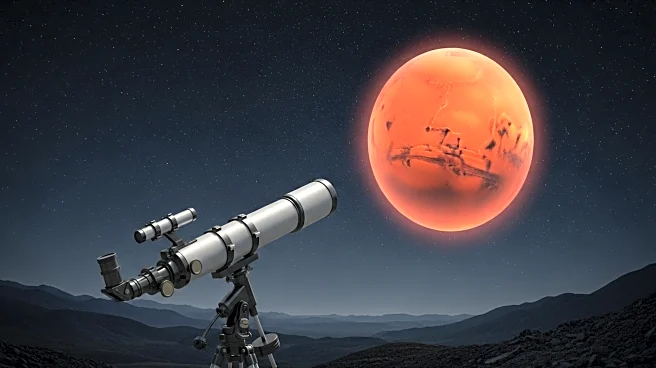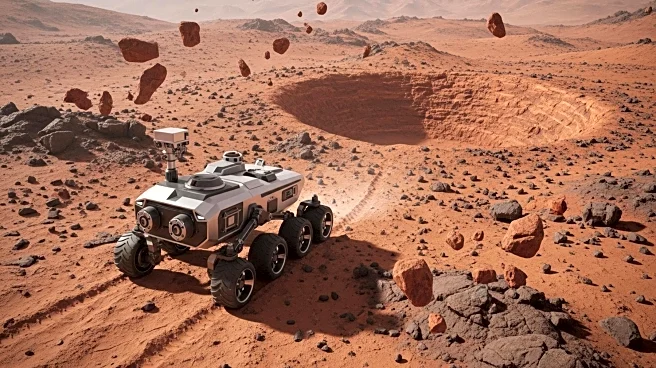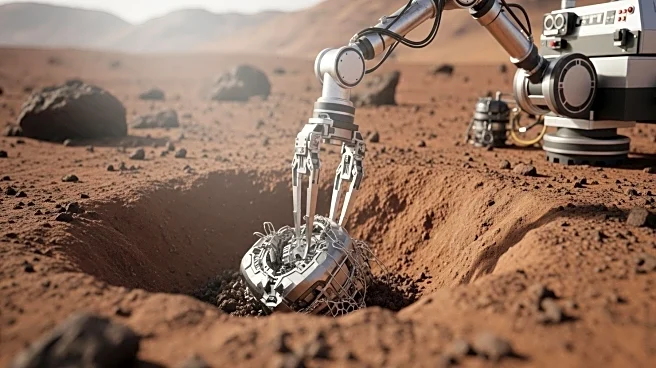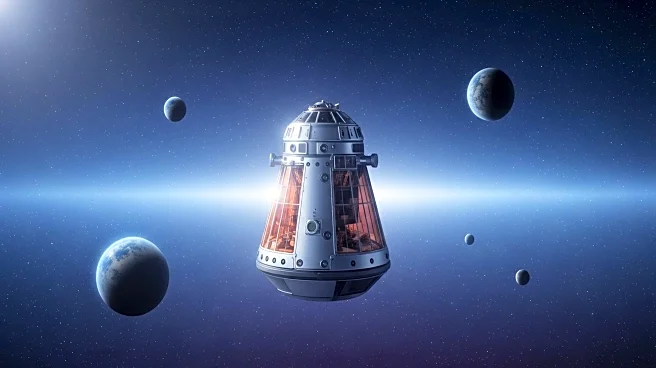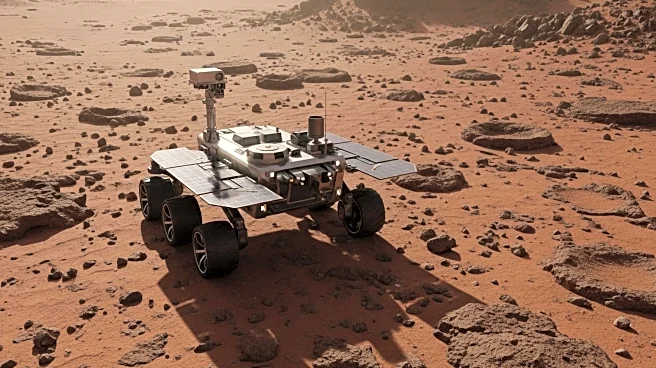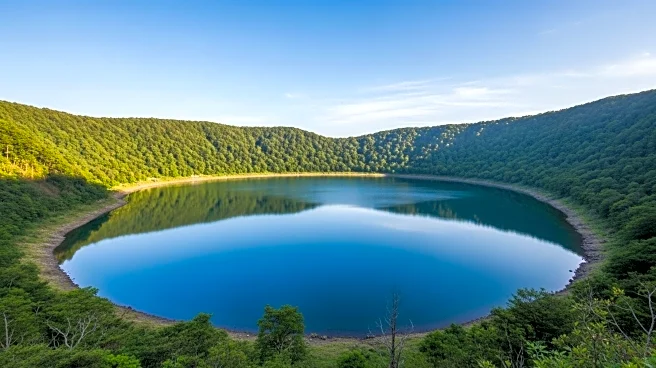What is the story about?
What's Happening?
Scientists from the SETI Institute have discovered a new mineral on Mars, named ferric hydroxysulfate, which suggests a watery and chemically active past on the planet. The discovery was made using data from the Mars Orbiter, which employs spectroscopy to analyze light reflecting off Mars' surface. This mineral forms in the presence of water, iron, and sulfur, indicating that Mars may have once had conditions similar to early Earth, potentially capable of sustaining life. The research, led by Dr. Janice Bishop, focused on the Valles Marineris region, using the CRISM instrument to identify unique light signatures that matched minerals formed in acidic, water-rich environments on Earth.
Why It's Important?
The discovery of ferric hydroxysulfate on Mars is significant as it provides evidence that the planet may have once been capable of sustaining life. This finding adds to the growing body of evidence suggesting Mars was once much warmer and wetter, similar to Earth. Understanding Mars' environmental history is crucial for future exploration and potential human habitation. The presence of this mineral, along with others like kaolinite, indicates complex geological processes that could have supported life. This discovery may prioritize regions like Juventae Chasma and Aram Chaos for further exploration, advancing our quest to understand Mars' past and its potential for future life.
What's Next?
The discovery of ferric hydroxysulfate may lead to increased focus on specific Martian regions for in-depth exploration. Scientists may prioritize Juventae Chasma and Aram Chaos for future missions to better understand Mars' geological history and its capacity to support life. This could involve deploying more advanced instruments to analyze the surface and subsurface of these areas. Additionally, the findings may influence NASA's strategies for searching for signs of ancient life and planning for potential human missions to Mars, as understanding the planet's past conditions is crucial for future exploration.
AI Generated Content
Do you find this article useful?
